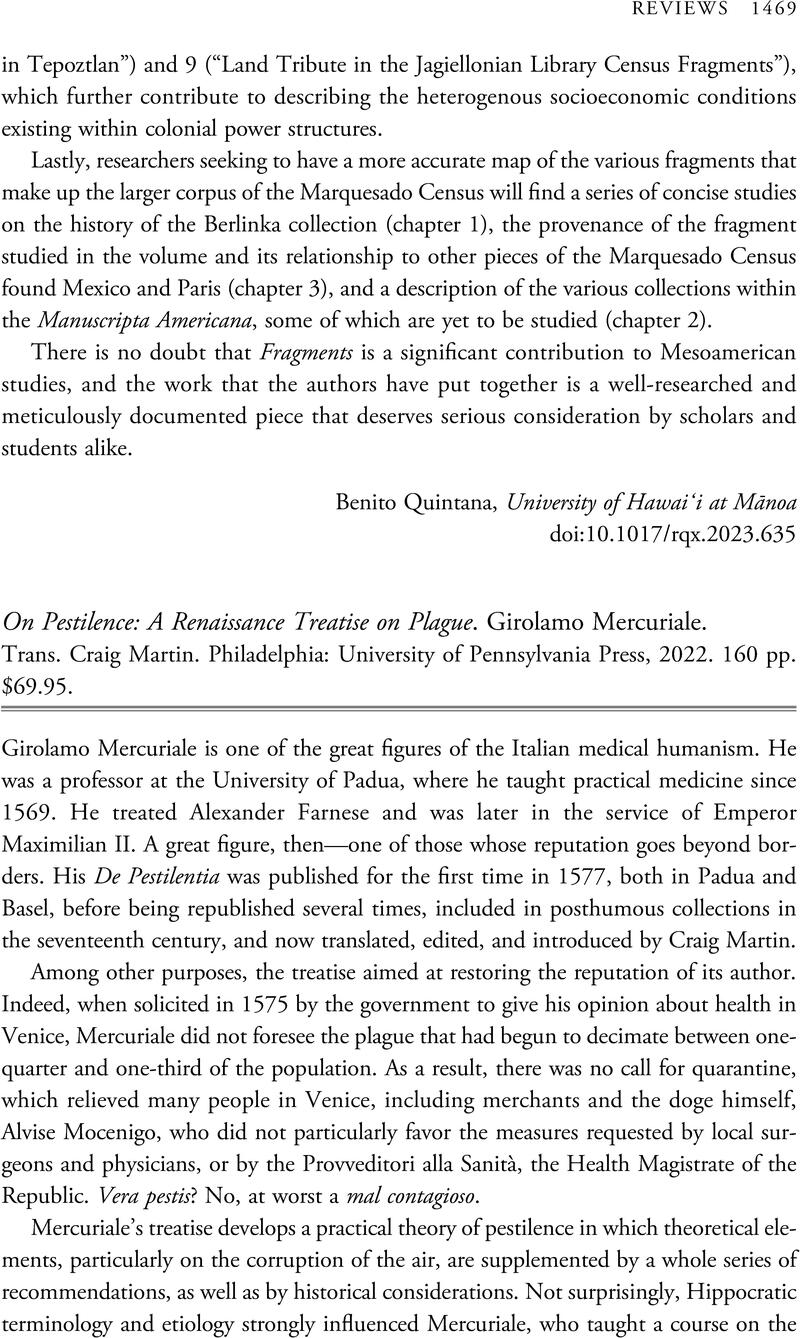No CrossRef data available.
Article contents
On Pestilence: A Renaissance Treatise on Plague. Girolamo Mercuriale. Trans. Craig Martin. Philadelphia: University of Pennsylvania Press, 2022. 160 pp. $69.95.
Review products
On Pestilence: A Renaissance Treatise on Plague. Girolamo Mercuriale. Trans. Craig Martin. Philadelphia: University of Pennsylvania Press, 2022. 160 pp. $69.95.
Published online by Cambridge University Press: 24 January 2024
Abstract
An abstract is not available for this content so a preview has been provided. Please use the Get access link above for information on how to access this content.

- Type
- Review
- Information
- Copyright
- Copyright © The Author(s), 2024. Published by Cambridge University Press on behalf of the Renaissance Society of America



